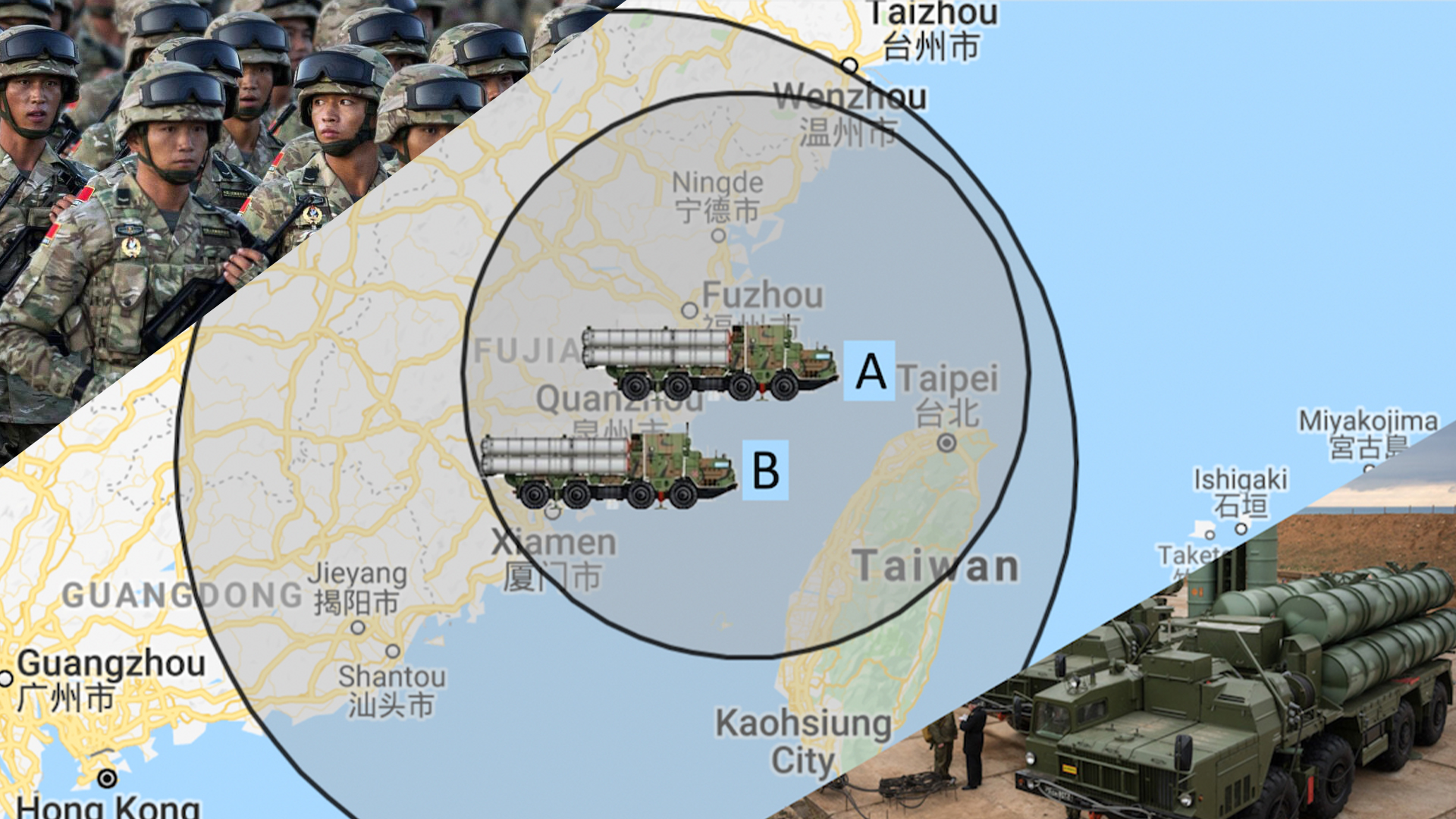
In a shocking turn of events, the geopolitical landscape has been dramatically altered following President Joe Biden’s unexpected resignation. As the United States grapples with political instability, the Chinese Communist Party (CCP) has seized this moment of vulnerability to conduct unprecedented military drills in the Taiwan Strait. This show of force, involving air, land, sea, and missile forces in a coordinated exercise, has raised alarm bells across the globe. Experts are now questioning if these maneuvers are a prelude to a full-scale invasion of Taiwan. Our in-depth report examines the unfolding crisis and the potential implications for regional and global security.
Political Strife in the United States
President Joe Biden’s sudden resignation has thrown the United States into disarray. The political fallout is severe, with partisan battles intensifying and public confidence in the government waning. As the country struggles to navigate this crisis, the CCP has moved quickly to exploit the situation. Beijing’s swift response has been to order extensive military drills in the Taiwan Strait, signaling a possible shift in the balance of power in the region.
A Show of Force: The CCP’s Military Drills
For the first time, China has conducted spot drills involving a combined force of air, land, sea, and missile units. The scale and coordination of these exercises are unprecedented, showcasing the CCP’s ability to mobilize and project power rapidly. The drills have included simulated amphibious landings, helicopter insertions, and missile strikes, all aimed at demonstrating China’s readiness to take decisive action.
The Drills in Detail
- Air Operations: Chinese fighter jets, bombers, and surveillance aircraft have been conducting sorties over the Taiwan Strait, simulating strikes on key targets and air superiority missions. These operations have involved complex maneuvers and electronic warfare tactics designed to neutralize Taiwan’s air defenses and control the airspace.
- Naval Maneuvers: The People’s Liberation Army Navy (PLAN) has deployed a significant portion of its fleet, including aircraft carriers, destroyers, frigates, and submarines. These vessels have conducted live-fire exercises, anti-submarine warfare drills, and amphibious assault simulations. The presence of carrier strike groups near Taiwan is particularly concerning, as it underscores China’s capability to project power far beyond its shores.
- Land Forces: The People’s Liberation Army (PLA) has mobilized infantry, armored units, and special forces for amphibious and airborne operations. These exercises have included beach landings, rapid assaults on fortified positions, and urban warfare simulations. The involvement of heavy artillery and rocket forces suggests preparations for sustained ground combat.
- Missile Forces: The PLA Rocket Force has been conducting missile tests and drills aimed at overwhelming Taiwan’s defenses. These exercises have featured a variety of missile systems, including short-range ballistic missiles (SRBMs), medium-range ballistic missiles (MRBMs), and cruise missiles. The focus has been on precision strikes against radar installations, command centers, and critical infrastructure.
China’s Strategic Calculus
The CCP’s decision to escalate military activities in the Taiwan Strait is driven by several factors. Firstly, the political turmoil in the U.S. presents a strategic opportunity for Beijing. With Washington distracted and potentially weakened, China sees a window to assert its claims over Taiwan more aggressively. Secondly, these drills serve as a warning to Taiwan and its allies, signaling that China is prepared to use force if necessary. Lastly, the exercises are a test of China’s military readiness and a demonstration of its growing capabilities to both domestic and international audiences.
The Invasion Scenario
Military analysts are now closely monitoring the situation, speculating whether these drills are a precursor to an actual invasion. The potential invasion of Taiwan would likely unfold in several stages, beginning with a massive missile and cyber attack to cripple the island’s defenses and critical infrastructure.
Stage One: Initial Salvo
The invasion would commence with a coordinated missile and cyber assault aimed at neutralizing Taiwan’s radar installations, communication networks, and command centers. The PLA Rocket Force would launch a barrage of SRBMs and MRBMs, targeting radar sites, air defense batteries, and military bases. Simultaneously, cyberattacks would disrupt Taiwan’s power grid, water supply, and communication systems, plunging the island into chaos.
Stage Two: Air and Naval Dominance
Following the initial salvo, the PLA Air Force and PLAN would move to establish air and naval superiority. Chinese fighter jets and bombers would conduct airstrikes against remaining air defenses and military installations, while naval forces would enforce a blockade, cutting off Taiwan from external support. Anti-submarine warfare operations would target Taiwanese submarines, ensuring uncontested control of the surrounding waters.
Stage Three: Amphibious and Airborne Assaults
With air and naval dominance secured, the PLA would initiate amphibious and airborne assaults. Amphibious assault ships, escorted by destroyers and frigates, would land infantry and armored units on Taiwan’s beaches. Helicopters would insert special forces and paratroopers behind enemy lines, targeting key infrastructure and securing strategic positions. The objective would be to establish multiple beachheads and push inland rapidly.
Stage Four: Urban Warfare and Occupation
The final stage of the invasion would involve urban warfare and the occupation of major cities. PLA units would engage in street-by-street fighting, supported by artillery and close air support. The goal would be to capture government buildings, military installations, and critical infrastructure, effectively bringing Taiwan under Chinese control. Special forces would target political leaders and military commanders, aiming to decapitate the island’s leadership.
Global Implications
The potential invasion of Taiwan would have far-reaching implications for regional and global security. The United States, Japan, and other regional allies would face a difficult decision on whether to intervene militarily. An American response could escalate into a broader conflict, drawing in other powers and destabilizing the entire Asia-Pacific region. The economic fallout would be significant, with disruptions to global supply chains and financial markets.
U.S. Response: A Dilemma
The United States’ response to a Chinese invasion of Taiwan would be crucial. With its political leadership in turmoil, the U.S. faces a significant dilemma. On one hand, Washington has long-standing commitments to Taiwan’s defense under the Taiwan Relations Act. On the other hand, direct military intervention risks a full-scale war with China, a nuclear-armed power. The U.S. military would need to rapidly deploy forces to the region, potentially engaging Chinese forces in a high-stakes conflict.
Japan and Regional Allies: A United Front?
Japan, a key U.S. ally, would likely play a critical role in any response. Tokyo has expressed strong support for Taiwan’s security and has its own concerns about Chinese territorial ambitions. Japan’s Self-Defense Forces would be essential in countering Chinese naval and air operations. Other regional allies, such as Australia and South Korea, would also face pressure to support Taiwan and the U.S.-led coalition. The cohesion of this coalition would be vital in deterring or countering Chinese aggression.
Economic and Humanitarian Impact
An invasion of Taiwan would have devastating economic and humanitarian consequences. Taiwan is a major hub for semiconductor manufacturing, and any disruption would have ripple effects across global industries, from electronics to automotive. The humanitarian impact would be severe, with potential mass casualties and a refugee crisis. International organizations and humanitarian agencies would face significant challenges in providing aid and support.
Conclusion: A Tenuous Peace
As the world watches the unfolding crisis in the Taiwan Strait, the situation remains precarious. The CCP’s military drills have demonstrated China’s capabilities and intentions, raising the stakes for Taiwan and its allies. The potential for conflict is high, and the consequences of an invasion would be profound. As political strife continues in the United States, the international community must navigate a complex and dangerous landscape, working to maintain peace and stability in the face of escalating tensions.




